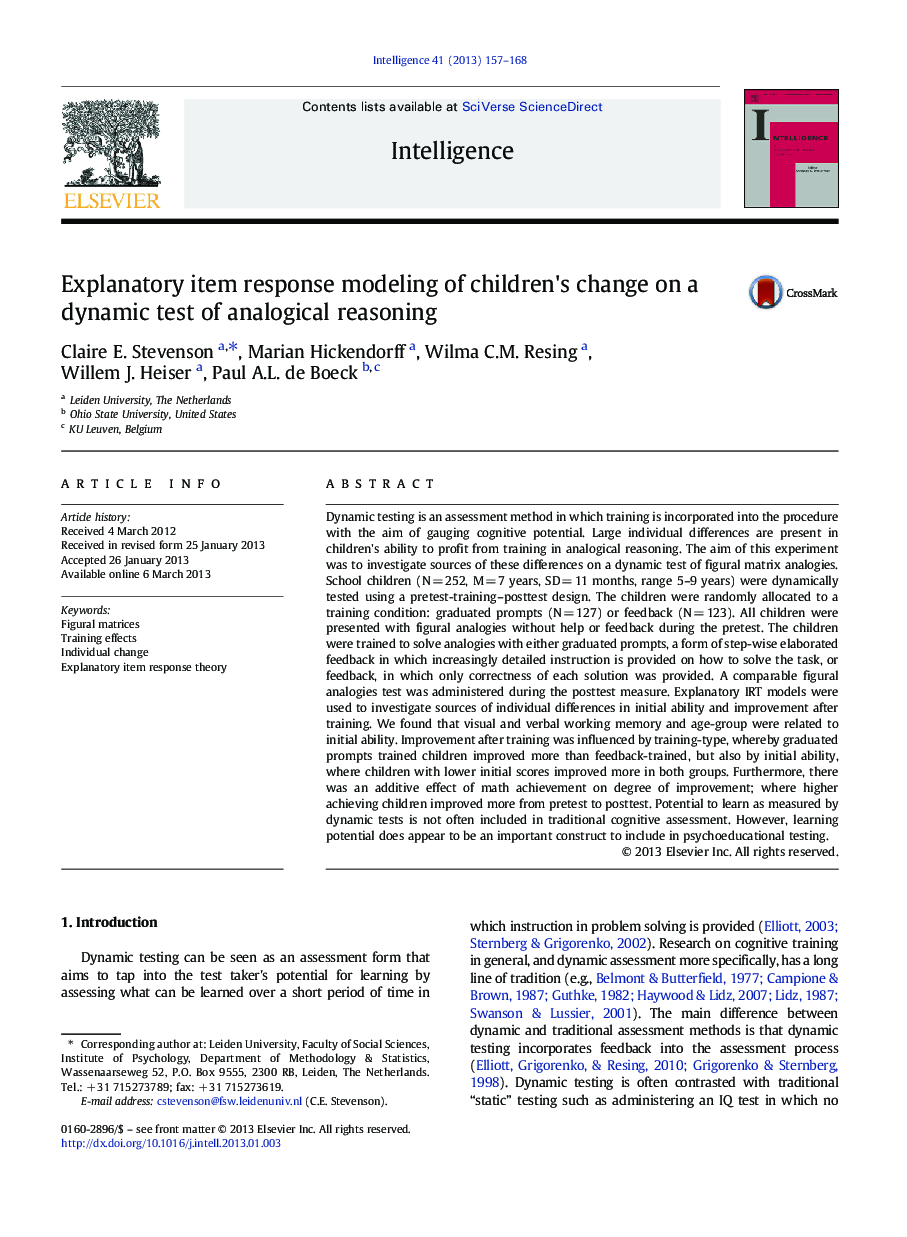| Article ID | Journal | Published Year | Pages | File Type |
|---|---|---|---|---|
| 929081 | Intelligence | 2013 | 12 Pages |
Dynamic testing is an assessment method in which training is incorporated into the procedure with the aim of gauging cognitive potential. Large individual differences are present in children's ability to profit from training in analogical reasoning. The aim of this experiment was to investigate sources of these differences on a dynamic test of figural matrix analogies. School children (N = 252, M = 7 years, SD = 11 months, range 5–9 years) were dynamically tested using a pretest-training–posttest design. The children were randomly allocated to a training condition: graduated prompts (N = 127) or feedback (N = 123). All children were presented with figural analogies without help or feedback during the pretest. The children were trained to solve analogies with either graduated prompts, a form of step-wise elaborated feedback in which increasingly detailed instruction is provided on how to solve the task, or feedback, in which only correctness of each solution was provided. A comparable figural analogies test was administered during the posttest measure. Explanatory IRT models were used to investigate sources of individual differences in initial ability and improvement after training. We found that visual and verbal working memory and age-group were related to initial ability. Improvement after training was influenced by training-type, whereby graduated prompts trained children improved more than feedback-trained, but also by initial ability, where children with lower initial scores improved more in both groups. Furthermore, there was an additive effect of math achievement on degree of improvement; where higher achieving children improved more from pretest to posttest. Potential to learn as measured by dynamic tests is not often included in traditional cognitive assessment. However, learning potential does appear to be an important construct to include in psychoeducational testing.
► We investigated sources of variation in children's potential to learn to solve figural analogies. ► Explanatory IRT models showed more progression in children with lower initial ability. ► Change from pretest to posttest was unrelated to age or working memory. ► Improvement in analogy solving was related to math achievement.
